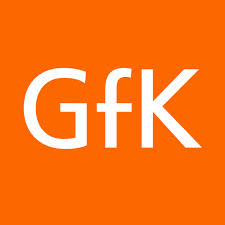 Nuremberg/Vienna, 26 June 2014 –Twitter has become an increasingly relevant platform for journalists, politicians, activists and newly empowered citizens to disseminate news and discuss current affairs. GfK in association with the University of Vienna have released their timely study, using new techniques and methodology, into leading contributors and their followers. The result maps the structure of individual countries’ Twitterspheres and how each coalesces to form a European universe, bringing to light divisions that underpin the political landscape within nationalities and in Europe as whole.
Nuremberg/Vienna, 26 June 2014 –Twitter has become an increasingly relevant platform for journalists, politicians, activists and newly empowered citizens to disseminate news and discuss current affairs. GfK in association with the University of Vienna have released their timely study, using new techniques and methodology, into leading contributors and their followers. The result maps the structure of individual countries’ Twitterspheres and how each coalesces to form a European universe, bringing to light divisions that underpin the political landscape within nationalities and in Europe as whole.
The debate on the European Parliamentary elections was used as the basis for defining relevant accounts. This delivered a universe of approximately 450,000 Twitter accounts, which were then reduced to a core of approximately 12,000.
Twitter accounts gather into clusters depending on political and national bias. Opposition groups, such as Spain’s 15M movement, create discordant alternative clusters. A strong European central core is noticeable, composed of accounts that have a Europe-wide following – those directly related to EU politics and the British international news media.
The European universe is dominated by Western Europe – the Eastern European countries are largely absent. Twitter has not yet become a key channel through which political news flows across the countries of Eastern Europe
Twitter’s users reach beyond the politicians and their parties.
Whilst mainstream news media and high-profile politicians, whether from the left, right, or center are dominant, one will also find bloggers, cartoonists and extra-parliamentary political groups commanding a significant following, although their roles tend to be confined to their own national communication networks.
For a free copy of the study, please go to www.gfk.com/twitter
More information:
About GfK
GfK is the trusted source of relevant market and consumer information that enables its clients to make smarter decisions. More than 13,000 market research experts combine their passion with GfK’s 80 years of data science experience. This allows GfK to deliver vital global insights matched with local market intelligence from more than 100 countries. By using innovative technologies and data sciences, GfK turns big data into smart data, enabling its clients to improve their competitive edge and enrich consumers’ experiences and choices.
For more information, please visit www.GfK.com or follow GfK on Twitter: https://twitter.com/GfK_en
About The Department of Communication at the University of Vienna
The Department of Communication at the University of Vienna is one of the world’s largest departments for communication science. Main research areas include political communication, journalism, advertising, public relations, critical technology and media analysis, media change, social media, the developments of communication science methods and communication history.
For more information, please visit http://publizistik.univie.ac.at or go to
http://axelmaireder.net
